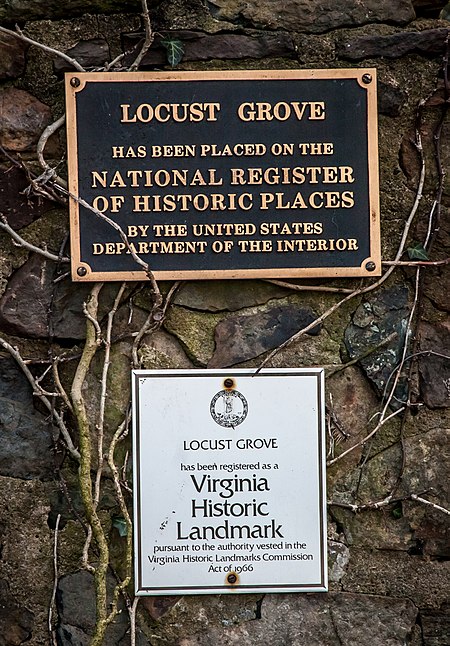Locust Grove (Rapidan, Virginia)
Houses completed in 1730Houses in Culpeper County, VirginiaHouses on the National Register of Historic Places in VirginiaNational Register of Historic Places in Culpeper County, VirginiaNorthern Virginia Registered Historic Place stubs

Locust Grove, also known as the Goodwin Farm, is a historic home located at Rapidan, Culpeper County, Virginia. The original section was built about 1730, and expanded in at least four major building campaigns over the next half-century. It had its present configuration by 1840. The house is a 1+1⁄2-story, four-bay, log and frame structure featuring a central chimney, two-room plan main block flanked by early gable-end lean-tos and rear additions. It has a steep gable roof with modern dormers. It was renovated in the 1970s. Also on the property is a contributing mid-19th century smokehouse.It was listed on the National Register of Historic Places in 1985.
Excerpt from the Wikipedia article Locust Grove (Rapidan, Virginia) (License: CC BY-SA 3.0, Authors, Images).Locust Grove (Rapidan, Virginia)
Locust Grove Lane,
Geographical coordinates (GPS) Address Nearby Places Show on map
Geographical coordinates (GPS)
| Latitude | Longitude |
|---|---|
| N 38.316388888889 ° | E -78.046111111111 ° |
Address
Locust Grove Lane 28192
22733
Virginia, United States
Open on Google Maps








